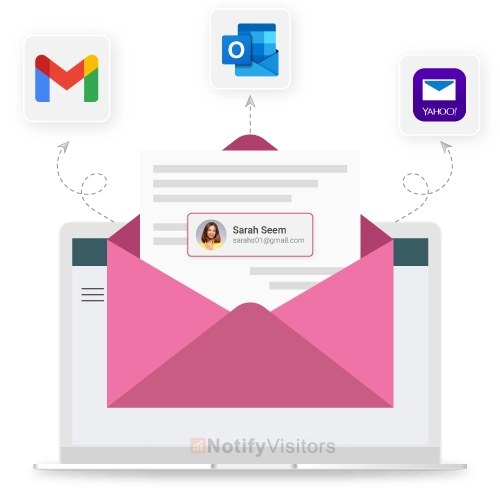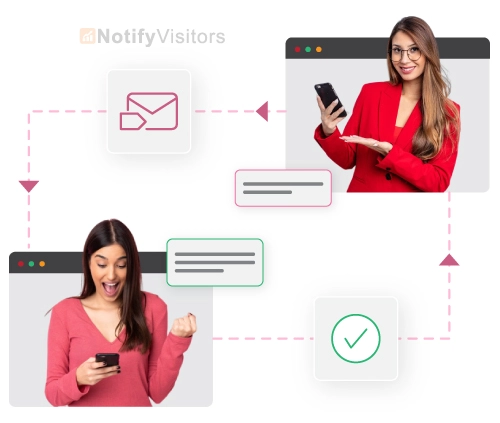In today’s fast-paced digital world, mastering email efficiency is essential for staying organized and productive. In 2025, email tagging has emerged as a powerful tool for streamlining your inbox and optimizing your workflow.
By strategically categorizing and labeling your emails, you can quickly locate important messages, prioritize tasks, and reduce the time spent on searching for specific information.
In this article, we will explore the ins and outs of email tagging and how it can revolutionize your email management. We’ll delve into the benefits of implementing a robust tagging system, including improved search capabilities, enhanced collaboration, and better task management.
Whether you’re a busy professional, a small business owner, or a remote worker, understanding email tagging techniques will help you regain control of your inbox and make the most out of your communication.
Stay tuned as we provide expert tips, best practices, and real-world examples to empower you on your journey towards email efficiency. Let’s embrace the power of email tagging and unlock a new level of productivity in 2023 and beyond.
Contents
Introduction to Email Tagging

Email communication has become an integral part of our personal and professional lives. With the ever-increasing volume of emails we receive on a daily basis, it can be challenging to keep our inboxes organized and stay on top of important messages.This is where email tagging comes into play.
Email tagging plays a significant role in email organization by allowing you to categorize and label your emails based on their content, priority, or purpose. With a well-organized inbox, you can easily find specific emails, filter out irrelevant messages, and focus on what matters most.
Proper email organization also promotes clarity and reduces the risk of miscommunication. When your inbox is clutter-free and well-structured, you can quickly understand the context of each email and respond accordingly, saving valuable time and avoiding misunderstandings.
In summary, email organization is essential for maintaining productivity, reducing stress, and ensuring effective communication. By incorporating email tagging into your email management strategy, you can take control of your inbox and optimize your workflow.
What is Email Tagging?

Email tagging is a method of categorizing and labeling emails using tags or labels. These tags act as virtual markers that help you identify and sort emails based on specific criteria. By assigning tags to your emails, you can quickly locate them, filter them, or perform specific actions based on their tags.
Tags can be customized to suit your preferences and needs. You can create tags based on the sender, subject, urgency, project, or any other relevant criteria. For example, you may create tags such as “Urgent,” “Important,” “Client A,” “Marketing,” or “To Do.” The possibilities are endless, and you can create as many tags as necessary to organize your emails effectively.
Email tagging is different from traditional email folders or labels. While folders or labels require you to assign an email to a specific location, email tags allow you to assign multiple tags to a single email. This flexibility enables you to categorize emails under different criteria simultaneously, providing a more comprehensive and dynamic organization system.
Now that you have a basic understanding of email tagging, let’s explore the benefits it brings to your email management.
The Importance of Email Tagging
Email tagging is a method of categorizing and organizing your emails using specific keywords or labels. It allows you to quickly identify and locate emails based on their topic, priority, or any other criteria you choose. By utilizing email tags, you can easily filter and search for specific emails,
saving valuable time and effort. Moreover, email tagging promotes effective collaboration within teams by providing a standardized way of organizing and sharing information.
Different Types of Email Tags
There are various types of email tags that you can use to organize your emails. Here are some commonly used tags:
- Priority Tags: These tags indicate the urgency or importance of an email. For example, you can use tags like “High Priority,” “Medium Priority,” or “Low Priority” to highlight the level of attention required.
- Topic Tags: Topic tags allow you to categorize emails based on their subject matter. For instance, you can create tags for different projects, clients, or departments to easily sort and retrieve relevant emails.
- Action Tags: Action tags are used to indicate the next steps or actions required for a particular email. Tags like “To-Do,” “Follow-Up,” or “Waiting for Response” can help you stay organized and ensure that important tasks are not forgotten.
- Status Tags: Status tags provide visibility into the progress or status of an email. Tags like “Open,” “In Progress,” or “Closed” can help you track the lifecycle of an email and prioritize your workload accordingly.
How to Use Email Tags Effectively

Now that you understand the different types of email tags, let’s explore how to use them effectively:
- Create a Tagging System: Before you start using email tags, it’s important to establish a tagging system that aligns with your workflow. Think about the categories or criteria that are most relevant to your email management needs and create tags accordingly.
- Be Consistent: Consistency is key when it comes to email tagging. Make sure to use the same tags consistently across all emails to avoid confusion and ensure accurate categorization.
- Use Multiple Tags: Don’t limit yourself to a single tag per email. Instead, use multiple tags to provide more context and flexibility. For example, you can use both a priority tag and a topic tag to further refine your search criteria.
- Automate Tagging: Take advantage of email management tools and software that offer automated tagging features. These tools can analyze the content of your emails and suggest relevant tags, saving you time and effort.
Best Practices for Email Tagging
To make the most out of email tagging, consider following these best practices:
- Keep it Simple: Avoid creating too many tags that may overwhelm you or your team. Stick to a manageable number of tags that cover the most important categories.
- Regularly Review and Update Tags: As your email management needs evolve, periodically review and update your tags to ensure they remain relevant and aligned with your current workflow.
- Educate Your Team: If you are part of a team or organization, make sure everyone is aware of the email tagging system and understands its benefits. Provide training and resources to help your team members effectively use email tags.
- Experiment and Iterate: Don’t be afraid to experiment with different tag combinations or approaches. Learn from your experience and refine your tagging system to continuously improve productivity and efficiency.
Tools and Software for Email Tagging

There are several tools and software available that can enhance your email tagging experience. Here are a few popular options:
- Gmail: Gmail offers a robust tagging feature that allows you to create and apply labels to your emails. These labels function like tags and can be customized to suit your specific needs.
- Microsoft Outlook: Microsoft Outlook also provides a tagging feature called “Categories.” Categories allow you to color-code and categorize your emails for easy identification and organization.
- Email Client Extensions: Various email client extensions, such as MailTag, Boomerang, and Streak, offer additional tagging functionalities like automated tagging, reminders, and email tracking.
Email Tagging for Team Collaboration

Effective team collaboration relies on clear communication and efficient information sharing. Email tagging can significantly enhance team collaboration by providing a structured and accessible email organization system.
By using shared tags that everyone on the team can access, you establish a common language for categorizing and locating project-related emails. This standardized approach eliminates confusion and ensures that team members can easily find the information they need, even when dealing with a high volume of emails.
Moreover, email tagging enables team members to collaborate seamlessly across different time zones or locations. By tagging emails with relevant project details or deadlines, team members can quickly identify their responsibilities and track progress, regardless of their physical location.
Email tagging also promotes transparency within the team. By using shared tags, team members can have visibility into the communication and actions taken by others. This transparency fosters accountability, reduces duplication of efforts, and promotes an efficient workflow.
Email tagging is a valuable tool for team collaboration, providing a structured and accessible system for organizing project-related emails. By implementing email tagging within your team, you can streamline communication, enhance accountability, and improve overall productivity.
Common Mistakes to Avoid When Using Email Tags
While email tagging can significantly improve your email management, it’s important to avoid common mistakes that can undermine its effectiveness. Here are a few mistakes to avoid:
- Overusing Tags: Using too many tags can make your email organization system complex and confusing. Stick to a reasonable number of tags that cover the essential categories.
- Inconsistent Tagging: Failing to use tags consistently can lead to misclassification and difficulties in locating specific emails. Ensure that everyone using the tagging system adheres to the same conventions.
- Ignoring Tag Maintenance: Neglecting to regularly review and update your tags can result in an outdated and inefficient system. Periodically assess your tagging system and make necessary adjustments.
- Not Training Your Team: If you are working in a team, neglecting to educate your team members on the email tagging system can lead to inconsistencies and misunderstandings. Ensure that everyone understands and follows the tagging guidelines.
Examples of Successful Email Tagging Campaigns
To inspire your email tagging efforts, here are a few examples of successful email tagging campaigns:
- Sales Pipeline Management: A sales team can use tags like “Lead,” “Qualified,” “Negotiation,” and “Closed” to track the progress of their deals and prioritize follow-ups.
- Customer Support: A customer support team can use tags like “Technical Issue,” “Billing Inquiry,” or “Feature Request” to quickly identify and categorize customer inquiries for efficient resolution.
- Project Management: Project managers can use tags like “Planning,” “Execution,” “Review,” and “Completed” to track the status and progress of different project tasks.
Future Trends and Predictions for Email Tagging in 2023

As we move into 2023, email tagging is expected to evolve further to meet the changing needs of email users. Some future trends and predictions for email tagging include:
- Artificial Intelligence-Powered Tagging: AI technology will play a more significant role in automatically tagging emails based on their content, context, and user preferences.
- Integration with Project Management Tools: Email tagging will seamlessly integrate with popular project management tools, allowing for improved collaboration and task tracking.
- Enhanced Mobile Tagging Experience: Mobile email clients will provide more robust tagging features, ensuring that users can effectively organize their emails even when on the go.
Conclusion
Email tagging is a powerful tool that can revolutionize the way you manage your inbox. By implementing an effective tagging system, you can effortlessly organize your emails, increase productivity, and improve collaboration within your team.
Remember to choose relevant tags, be consistent, and leverage the available tools and software to enhance your email tagging experience. With the right approach, email tagging can transform your email workflow and make you a master of email organization in 2023 and beyond.
Also Read:

























 Email
Email SMS
SMS Whatsapp
Whatsapp Web Push
Web Push App Push
App Push Popups
Popups Channel A/B Testing
Channel A/B Testing  Control groups Analysis
Control groups Analysis Frequency Capping
Frequency Capping Funnel Analysis
Funnel Analysis Cohort Analysis
Cohort Analysis RFM Analysis
RFM Analysis Signup Forms
Signup Forms Surveys
Surveys NPS
NPS Landing pages personalization
Landing pages personalization  Website A/B Testing
Website A/B Testing  PWA/TWA
PWA/TWA Heatmaps
Heatmaps Session Recording
Session Recording Wix
Wix Shopify
Shopify Magento
Magento Woocommerce
Woocommerce eCommerce D2C
eCommerce D2C  Mutual Funds
Mutual Funds Insurance
Insurance Lending
Lending  Recipes
Recipes  Product Updates
Product Updates App Marketplace
App Marketplace Academy
Academy

